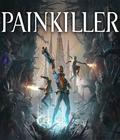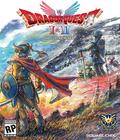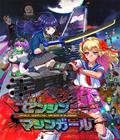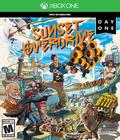Buy Sunset Overdrive
Insomniac Games is at its best when it prioritizes fun, but the team can also pull off something serious, as demonstrated in both Disruptor on the PSone and the Resistance series on the PS3. However, even more fans appreciate the light-hearted games like the original Spyro the Dragon trilogy on the PSone and the Ratchet & Clank series from the PS2 onward. Its last game, Fuse, was poorly received by both critics and players, but the team returns to its signature gameplay strengths in Sunset Overdrive.
On the cusp of launching its new energy drink, the Fizzco company decides to do a soft launch and give the citizens of Sunset City a taste of the new product at a party. Unfortunately, the new drink OverCharge has a nasty side effect: It turns anyone who drinks it into mindless, aggressive mutants. You play the role of a nameless hero, one of the few who didn't drink the stuff because you were on janitor duty. After barely escaping with your life, you wait things out in your apartment. Two weeks later, your place has been compromised and is overrun with the mutants, who have been labeled as OD. After being saved by a grizzly old man, you try to survive and leave the city before things get worse.
The story might make the game seem serious, and a number of elements fit the blueprint of a serious zombie game, like the Dead Rising series. There's an influential company trying to cover up something. There's a group of survivors. Then there's the hero who's just a normal person who got sucked into the whole thing against his will. For those who have played lots of games dealing with the apocalypse, it feels familiar.
It doesn't take long before you discover that those familiar elements are layered with heavy doses of humor and style. You'll encounter cheerleaders with Day of the Dead makeup, LARPers who've been mentally scarred into living out apocalyptic fantasies, and pampered rich kids stuck on their phones all day. The scientist on your side is very laid-back and reminds you to cut loose and have fun during the apocalypse. You quickly go from scared to making the most of a bad situation, all while remaining snarky. The writers did a good job of reining it in, so there's enough wit to be funny without being annoying, a fault in games that try too hard to create that kind of hero.
The humor goes beyond the characters and manifests in a variety of gags. There's some potty humor, like a phallic-looking gun being called the Compensator. Pop culture references are also thrown around, though not to the extent that it feels like it's being done to camouflage subpar writing. The game tends to highlight fourth-wall-breaking jokes. In the tutorial sections, you'll wonder out loud about button prompts and menus and the fact that some characters disappear after cut scenes. You'll even see this happen with character respawns: You burst from graves, teleport in from the ether, arrive in phone booths, or get thrown from vans by some of the OD. In cut scenes, smoke and explosions actually spell out words for you. Like the rest of the humor, it feels complementary instead of overwhelming.
The first thing you'll be able to do is customize your character. You start with the usual things, like body build, face, gender and hair style. You'll be able to outfit your character with lots of clothing pieces, and this is where the development team prides itself on flexibility. Clothing pieces have no gender designation, so you can accessorize without any restrictions. All of this can be changed at any point, and the story isn't affected by your gender, so you won't miss out on anything.
The second thing you'll notice is how the game takes inspiration from other titles and mixes them up. Insomniac's penchant for weapon variety, as seen in the Ratchet & Clank series, comes on strong. While there are mundane weapons like the AK-47 and magnum pistol, you have other options, including a bowling ball cannon, an acid mine launcher that uses figurines as sprinklers, a sub-machine gun that shoots fireworks, and a record launcher that spits bouncing vinyl LPs. Those weapons are also upgradeable through use and can have modifiers attached.
Like Dead Rising 3, the streets are filled with enemies, but they come from different groups. The main groups are the OD; the Scabs, who are marauders that want to take over the city; and Fizzco bots, who want to cover up the truth. The OD consists of the typical grunts, but there's also the variety that explodes near you, big tanks that spawn more grunts, and acid spitters. They have energy meters, so you'll know if you're inflicting any damage.
The mobility in Sunset Overdrive is inspired by titles like Infamous and Saints Row IV. You can't drive any vehicles (except for one section), and you can't fly or run fast, but you have acrobatic moves that make up for it. As long as you approach any wall at an angle, you can wall-run as long as you want, turn corners, and roll along walls. You can grind on anything resembling a rail, whether it's the edge of a building or an electric wire. In the case of an electric wire, you can use it as a zip line. You can also jump, a seemingly normal ability until you discover that almost every object can be used as an impromptu trampoline. All of this is accomplished with two or three buttons, and it doesn't cover all of the moves you'll get or discover. The game lets you be the ultimate parkour artist, so you can look good while having fun.
Mobility is of such paramount importance that it governs a large part of the game design. Combat is an area that takes advantage of the game's movement options. Staying on the ground and attacking as you normally would in other third-person, open-world games would easily get you killed. You aren't tough, you have no regenerative health system (unless you get that ability), and the enemy hordes can quickly overwhelm you. Grinding on the same rail or jumping on the same car is fine, but those who like variety can augment their moves with powers, like increased attack strength, or elements, like erupting fire. Performing such stylish kills grants you badges, which can be turned in to improve your abilities, making the whole thing quite cyclical.
The emphasis on kinetic movement also governs the level design. At first sight, Sunset City is like any other metropolis, with three distinct islands connected by a bridge or two. Look closer, and you'll see that every structure is laden with rails and jump pads that allow anyone to quickly traverse the city without touching the ground. These opportunities are laid out rather naturally, but what makes it appealing is that there aren't any specific lines to follow. The structures are laid out in such a way that you can deviate from your path and still reach your intended location. You don't have true freedom to fly in the air without stopping, but what you have here is close enough.
Good combat and movement are nice, but it can all be for naught if the campaign isn't any good. Fortunately, the developers have made sure the campaign plays at a good pace. From your first mission, there's never a moment when you don't have a story-related mission. Side missions are also plentiful once you meet the different allied factions, and they come from unexpected places. A good number of these quests don't show up until you beat the game. The main story missions can take around 10 hours, but that's only 25% of the whole campaign. In a way, this is a good attempt to please those looking for a concise game. It also pleases those looking for a long, involving game that gives them plenty to do to achieve that 100% rating.
The missions start off pretty standard. Gather specific items from an area, protect a spot or party, and escort missions make up a majority of what you'll be doing. Notable tweaks make the missions a little less frustrating. Missions where you need to gather items try to make things easier by highlighting the item and only requiring you to get it, rarely forcing you to wipe out the area of enemies first. For missions where you protect a group, they have health bars, but they're resilient enough to not die instantly. Escort missions don't give the target a health bar, and even though they're pretty average when fighting back, at least they won't die. In each mission instance, death isn't a huge setback since half of the missions let you spawn where you left off. The other half puts you back at the last checkpoint for that mission, but this rarely feels like a chore.
There is one mission type that differs greatly: base defense. You can lay down traps to go along with direct combat to hold off invading OD forces until the timer runs out. Like the weapons you hold, the traps are playful, from the launcher that vaults enemies to any direction to tennis ball launchers and pods that shoot flames. All are governed by an energy system that prevents you from placing traps in every single area of the base, but you get back the energy you spent on the trap, whether you buy it back or let it get destroyed on the field. Even though the later defense stages try to up the difficulty by giving you different avenues and stronger OD classes to contend with, the game is still gracious enough to let you respawn where you left off.
Should you tire of missions, you can hunt for collectibles and participate in general side-quests. Like some open-world titles, some of these exist for the sake of giving you something to hunt for or flesh out the world. Most of the collectibles are used as currency for more amp abilities. By giving these things greater purpose, it feels less like game padding and busywork, and that's a positive thing.
With so many things that go right in the single-player game, one expects a few big things to go wrong, but the missteps are rather minor in the grand scheme of things. The fast movements can cause the camera to go nuts, but only if you wall-run and jump franticly in tight places. When unlocking and upgrading amps in the character menu, it can be difficult to discern which ones are unlocked, since the colors are so similar.
For a game that seems so focused on a gratifying single-player experience, there are a ton of online features. Each mission, whether it's a side mission or a story-related mission, comes with leaderboards, so you can compare scores and times against others. Though it wasn't present during our review period, the game promises bi-weekly challenges that require cooperation from others to reach specific goals, and all of the participants get rewards once the goals are reached. There's also Sunset TV, a YouTube window embedded in the game that plans to run weekly with news and tips.
There is a real multiplayer component in Sunset Overdrive. Chaos Squad is a competitive co-op mode for up to eight players, and it's accessible via phone booths scattered around the city. Though you are restricted to specific districts, the mode feels much like the multiplayer in Burnout Paradise in that you have some time to traverse the city and race to the challenge location. The challenges mimic things seen in the single-player game, like blowing up a blimp using bombs, getting a number of specific kill types, or blowing up scab hideouts. The challenges are scored with points, and at the end, the group does a multiplayer version of base defense, where all of the chaos accumulated throughout the challenges is translated into the number and variety of OD that appear. Completing all of this rewards you with cash, and scoring more points opens up the chance to get more clothing and OverCharge cans.
Much like the single-player game, Chaos Squad encourages fun above all. Friendly fire is off, so no one can grief others, and death comes with quick respawns. There is a competitive element in the score, but since everyone gets a reward, lower scores don't feel that bad. The amount of cash and OverCharge cans gained is rather significant, so those who want to grind so they can buy better stuff will spend a lot of time here.
In sharp contrast to the dull color scheme of most open-world titles, Sunset Overdrive features a vibrant world. Part of this is achieved by the level of detail in the buildings and the people. In-game cut scenes show off things that most other games wouldn't pay much attention to, like the individual buttons on jackets and sashes and a more realistic skin texture on the characters. Environments show off lots of other touches, like holes in glass windows, detailed art on the sides of buildings, and foliage that looks richer than usual. The bright colors are also helped by the perpetual daylight in most of the game, as you'll only see nighttime action in a few missions and the base defense sequences. There's great use of shadows and light, from explosions and hints of dust on the camera lens, but it avoids using any lens flare. Frame rate also holds up very well, even when the game is heavily populated with enemies.
The only flaws in this area come from pop-up and texture fade. The faster-than-normal movement, coupled with the ability to go vertical at great heights at any time, means you'll see items pop up far in the distance. It doesn't happen in critical areas, and it doesn't happen when you're close enough to have it radically affect your movement, but you'll see it when you're doing long chains of air glides, wall-runs, and extremely high bounces. Also, changing your clothes produces an effect where the textures appear blurry but quickly transition into clearer ones. Fast travel means that you'll see your clothes appear in different colors before it reverts to the correct hues. Like the pop-up issue, it doesn't affect gameplay, but you will notice it.
Just like the graphics, the sound specializes in being stylized and loud. Part of that comes from the clear effects, and the other part comes from the music, which really plays on the themes provided by the game. Electronic music emphasizes the party atmosphere, and there are a few missions that do something different, such as the music that plays during the conspiracy missions to mimic a spy movie. What you'll hear the most is rock music, particularly punk rock that is evenly represented between instrumental-only tracks and ones with vocals. It fits well with the chaotic nature of the game, and while it does play quite often, especially in combat, the game knows when to give everything a rest and let the effects carry the scene, giving you a respite before cranking things up again. As for the voice work, it is excellent and delivers the writing with just the right tone to emphasize the humor without derailing it. The only issue in this area comes from line repetition, which happens more often than you'd expect.
Sunset Overdrive proves that Insomniac's signature brand of gameplay and humor can work well in big, open worlds. The guns feel different and are fun to use, and the game gives you plenty of opportunities to use those weapons. The flexibility in mobility opens up the game for both horizontal and vertical gameplay, and the combination of this and the guns, along with some good level design, encourages creativity. Coupled with a great presentation, it provides an open-world experience with more emphasis on fun than anything else. For action fans, Sunset Overdrive is a must-have title.
Score: 9.0/10
More articles about Sunset Overdrive











 Set in the not-so-distant future, Sunset Overdrive is a stylized open-world shooter filled with overpowered weapons, crazed mutants and a sprawling city full of carnage.
Set in the not-so-distant future, Sunset Overdrive is a stylized open-world shooter filled with overpowered weapons, crazed mutants and a sprawling city full of carnage.












































